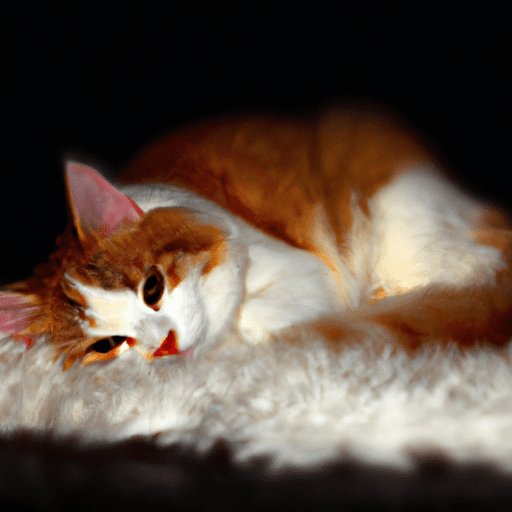Imagine never having to worry about the financial burden of unexpected veterinary bills for your beloved feline friend. With pet insurance for cats, you can rest easy knowing that your furry companion’s health is in good hands. Whether it’s routine check-ups, vaccinations, or even emergency surgeries, pet insurance provides the coverage your cat needs to stay happy and healthy. In this article, we will explore the benefits of pet insurance for cats and how it can give you peace of mind while protecting your furry companion.
Why is Pet Insurance Important?
The rising cost of veterinary care
Owning a pet comes with a multitude of responsibilities, and one of the most important is ensuring their health and well-being. However, the cost of veterinary care has been steadily rising in recent years, making it increasingly difficult for pet owners to afford necessary treatments and medications. This is where pet insurance plays a crucial role – it provides financial protection and peace of mind, allowing you to provide the best possible care for your furry friend without breaking the bank.
The benefits of having pet insurance
Having pet insurance offers a wide range of benefits for both you and your beloved feline companion. Firstly, it eliminates the financial stress that can arise from unexpected veterinary expenses. Whether it’s an emergency surgery, a chronic condition, or routine preventive care, pet insurance ensures that you won’t have to delay or compromise on necessary treatments due to financial constraints. Additionally, many insurance plans also offer additional perks such as coverage for alternative therapies and access to a network of veterinary specialists.
Peace of mind for unexpected expenses
Life is full of uncertainties, and the same goes for your pet’s health. Sudden accidents or unexpected illnesses can occur at any time, leaving you in a state of panic and worry. With pet insurance, you can rest easy knowing that you are prepared for the unexpected. It provides you with peace of mind, knowing that you have the financial support to provide your cat with the best care possible, no matter what comes their way.
Understanding Pet Insurance
How pet insurance works
Pet insurance operates similarly to human health insurance. You pay a monthly or annual premium to the insurance provider, and in return, they help cover the cost of your cat’s veterinary care. When your pet requires medical treatment, you submit a claim to the insurance company, and they reimburse you for eligible expenses based on the coverage and policy you have chosen. It’s important to note that pet insurance typically operates on a reimbursement basis, so you will need to pay the veterinary bills upfront and then get reimbursed by the insurance company.
Coverage options and policies
There are various coverage options and policies available when it comes to pet insurance. Some plans focus solely on accidents and emergencies, while others offer comprehensive coverage that includes both accidents and illnesses. Wellness coverage plans may also be available to cover routine preventive care and vaccinations. When selecting a policy, it’s crucial to carefully review the coverage options, including deductible and reimbursement amounts, to ensure that it aligns with your cat’s specific needs.
Factors to consider before choosing a plan
Before choosing a pet insurance plan for your cat, it’s essential to consider certain factors. Firstly, assess your cat’s breed, age, and overall health condition. Some breeds may be more prone to certain hereditary conditions, which may affect your coverage options. Additionally, look into the reputation and financial stability of the insurance provider. Read customer reviews and testimonials to gauge their level of customer satisfaction and reliability. Finally, carefully review the terms and conditions, including exclusions and limitations, to have a clear understanding of what is and isn’t covered by the policy.
Types of Pet Insurance for Cats
Accident-only coverage
Accident-only coverage plans specifically focus on providing financial protection for unforeseen accidents, such as injuries from falls, car accidents, or ingesting toxins. These plans generally do not cover illness or preventive care. If you’re looking for basic coverage to safeguard against accidents, this type of plan may be suitable for your cat.
Accident and illness coverage
Accident and illness coverage offers a more comprehensive level of protection for your feline companion. It covers both accidents and illnesses, which can range from minor infections to more serious conditions such as cancer or diabetes. This type of coverage is especially beneficial for cats with a higher risk of developing health issues.
Comprehensive coverage
Comprehensive coverage combines accident, illness, and often includes preventive care as well. This type of insurance plan provides the most extensive coverage for your cat’s veterinary needs. It covers a wide range of treatments, medications, and procedures, ensuring that no matter the circumstances, your cat will receive the necessary care.
Wellness coverage
While not as common as accident and illness coverage, wellness coverage plans are designed to cover routine preventive care expenses, such as vaccinations, wellness exams, dental cleanings, and flea/tick prevention. This type of coverage can be particularly beneficial for new kitten owners or those who want to provide the best preventive care for their cat.
What Does Pet Insurance Cover?
Emergency veterinary care
Pet insurance typically covers emergency veterinary care, which includes treatment for sudden accidents, injuries, or other urgent medical conditions. This can involve anything from X-rays, surgeries, emergency hospitalization, or specialized treatments.
Surgeries and hospital stays
If your cat requires surgery or an extended hospital stay due to illness or injury, pet insurance can help cover the costs. This can include various types of surgeries, such as spaying/neutering, tumor removal, or repairing fractures.
Prescription medications
Many pet insurance plans include coverage for prescription medications. This can range from antibiotics for minor infections to long-term medications for chronic conditions such as asthma or arthritis.
Chronic and hereditary conditions
Chronic and hereditary conditions, such as diabetes, allergies, or heart diseases, can require ongoing medical care and can be costly in the long run. Pet insurance can provide coverage for these conditions, ensuring that your cat receives the necessary care without straining your finances.
Alternative therapies
In recent years, alternative therapies such as acupuncture, chiropractic care, and hydrotherapy have gained popularity in veterinary medicine. Some pet insurance plans may cover these therapies as part of their comprehensive coverage, offering additional options for your cat’s well-being.
Exclusions and Limitations
Pre-existing conditions
Most pet insurance policies do not cover pre-existing conditions. These are medical conditions that your pet had before the insurance policy was purchased. It’s important to note that pre-existing conditions may vary depending on the insurance provider, so it’s crucial to thoroughly review the policy’s terms and conditions.
Routine and preventive care
While comprehensive plans may cover routine and preventive care, such as vaccinations and routine check-ups, not all plans include this coverage. It’s essential to review the policy’s details to understand which services and procedures are covered and which you may need to pay for out of pocket.
Elective procedures
Elective procedures, such as cosmetic surgeries or procedures that are not deemed medically necessary, are typically not covered by pet insurance. If you have specific concerns in this area, it’s important to discuss them with your insurance provider before purchasing a policy.
Cosmetic procedures
Cosmetic procedures, such as tail docking or ear cropping, are generally not covered by pet insurance. These procedures are often considered elective and are not typically required for your cat’s health and well-being.
How to Choose the Right Pet Insurance
Assessing your cat’s needs
When choosing a pet insurance plan, it’s crucial to assess your cat’s specific needs. Consider their age, breed, and any pre-existing conditions they may have. This assessment will help you determine the level of coverage required for your feline companion.
Comparing coverage and premiums
Take the time to compare different pet insurance plans and their coverage options. Look at the deductible, reimbursement rate, and annual limit to determine which plan offers the best value for your money. Consider the coverage in relation to your cat’s needs and the potential costs of treatments they may require.
Reading customer reviews
Understanding the experiences of other pet owners can provide valuable insights into the quality of service and reliability of an insurance provider. Read customer reviews and testimonials to gauge the level of satisfaction and support provided by the insurance company.
Considering customer service and claims process
The quality of customer service and the efficiency of the claims process are also important factors to consider when choosing a pet insurance provider. Look for an insurance company that has a reputation for prompt and helpful customer service, ensuring a smooth and hassle-free experience when submitting claims.
Examining policy exclusions and limitations
Carefully review the policy’s exclusions and limitations to ensure that you have a clear understanding of what is covered and what is not. Pay close attention to any specific exclusions related to your cat’s breed or pre-existing conditions to avoid any surprises in the future.
Tips for Saving Money on Pet Insurance
Opting for a higher deductible
Choosing a higher deductible can help lower your monthly premiums. However, it’s important to ensure that the deductible amount is still manageable for you should an emergency or significant medical expense arise.
Choosing a lower reimbursement rate
Lower reimbursement rates typically result in lower monthly premiums. Consider the potential costs of your cat’s veterinary care and choose a reimbursement rate that aligns with your budget and coverage needs.
Considering multi-pet discounts
If you have multiple pets, some insurance providers offer discounts for insuring more than one pet. This can help you save money while ensuring that all your furry companions have the necessary coverage.
Enrolling your pet at a young age
Enrolling your cat in pet insurance at a young age can help secure lower premiums. This is because younger pets are generally healthier and less likely to have pre-existing conditions, making them lower-risk for insurance providers.
Reviewing your policy regularly
As your cat’s needs and health status may change over time, it’s important to review your pet insurance policy regularly. This will ensure that the coverage you have is still appropriate and meets your cat’s evolving healthcare requirements.
How to Make a Claim
Contacting your insurance provider
When your cat requires veterinary care, contact your insurance provider to inform them of the situation and ask for guidance on how to proceed with the claim process. They will provide you with the necessary information and forms to fill out.
Gathering necessary paperwork
To make a successful claim, you will need to gather all relevant paperwork, including veterinary bills, medical records, and any other documentation required by your insurance provider. Ensure that you have all the necessary information organized and readily available.
Submitting the claim
Fill out the claim form provided by your insurance provider and submit it along with the required documentation. Be sure to follow their instructions regarding the submission method (mail, email, or online portal), and keep copies of all documents for your records.
Following up on the claim
After submitting your claim, it is important to follow up with your insurance provider to ensure that everything has been received and processed correctly. Stay in communication with them throughout the claims process, and if you have any questions or concerns, don’t hesitate to reach out to their customer service.
Alternatives to Pet Insurance
Setting up a savings account
One alternative to pet insurance is setting up a dedicated savings account specifically for your cat’s healthcare expenses. By regularly contributing to this fund, you can build up a financial safety net to cover unforeseen veterinary costs.
Pet healthcare credit cards
Pet healthcare credit cards are specifically designed to cover veterinary expenses. They function similarly to regular credit cards, allowing you to spread out payments for treatments and medications over time. Be sure to carefully review the terms and interest rates associated with these cards.
Pet health discount plans
Pet health discount plans are membership-based programs that offer discounts on various veterinary services, including examinations, vaccinations, and other treatments. While they are not insurance plans, they can provide cost savings for routine care.
Conclusion
Caring for your feline companion goes beyond providing food, shelter, and love. Pet insurance is an essential part of being a responsible pet owner, ensuring that your cat’s health needs are met without compromising your financial stability. Whether it’s covering unexpected emergencies or providing comprehensive coverage for illnesses and wellness care, pet insurance offers peace of mind and allows you to provide the best possible care for your furry friend. So, take the time to explore your options, assess your cat’s specific needs, and choose a pet insurance policy that will keep your furry companion healthy and happy for years to come.








